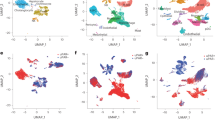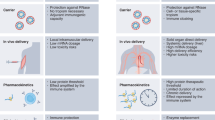Abstract
The downregulation of β-adrenergic receptors (β-AR) and decreased cAMP-dependent protein kinase activity in failing hearts results in decreased phosphorylation and inactivation of phosphatase-inhibitor-1 (I-1), a distal amplifier element of β-adrenergic signaling, leading to increased protein phosphatase 1 activity and dephosphorylation of key phosphoproteins, including phospholamban. Downregulated and hypophosphorylated I-1 likely contributes to β-AR desensitization; therefore its modulation is a promising approach in heart failure treatment. Aim of our study was to assess the effects of adeno-associated virus serotype 9 (AAV9) - mediated cardiac-specific expression of constitutively active inhibitor-1 (I-1c) and to investigate whether I-1c is able to attenuate the development of heart failure in mice subjected to transverse aortic constriction (TAC). 6-8 week old C57BL/6 N wild-type mice were subjected to banding of the transverse aorta (TAC). Two days later 2.8 × 1012 AAV-9 vector particles harbouring I-1c cDNA under transcriptional control of a human troponin T-promoter (AAV9/I-1c) were intravenously injected into the tail vein of these mice (n=12). AAV9 containing a Renilla luciferase reporter (AAV9/hRluc) was used as a control vector (n=12). Echocardiographic analyses were performed weekly to evaluate cardiac morphology and function. 4 weeks after TAC pressure- volume measurements were performed and animals were sacrificed for histological and molecular analyses. Both groups exhibited progressive contractile dysfunction and myocardial remodeling. Surprisingly, echocardiographic assessment and histological analyses showed significantly increased left ventricular hypertrophy in AAV9/I-1c treated mice compared to AAV9/hRluc treated controls as well as reduced contractility. Pressure-volume loops revealed significantly impaired contractility after AAV9/I-1c treatment. At the molecular level, hearts of AAV9/I-1c treated TAC mice showed a hyperphosphorylation of the SR Ca2+-ATPase inhibitor phospholamban. In contrast, expression of AAV9/I-1c in unchallenged animals resulted in selective enhancement of phospholamban phosphorylation and augmented cardiac contractility. Our data suggest that AAV9-mediated cardiac-specific overexpression of I-1c, previously associated with enhanced calcium cycling, improves cardiac contractile function in unchallenged animals but failed to protect against cardiac remodeling induced by hemodynamic stress questioning the use of I-1c as a potential strategy to treat heart failure in conditions with increased afterload.
This is a preview of subscription content, access via your institution
Access options
Subscribe to this journal
Receive 12 print issues and online access
$259.00 per year
only $21.58 per issue
Buy this article
- Purchase on Springer Link
- Instant access to full article PDF
Prices may be subject to local taxes which are calculated during checkout





Similar content being viewed by others
References
Neumann J, Eschenhagen T, Jones LR, Linck B, Schmitz W, Scholz H et al. Increased expression of cardiac phosphatases in patients with end-stage heart failure. J Mol Cell Cardiol 1997; 29: 265–272.
Bristow MR, Ginsburg R, Minobe W, Cubicciotti R.S, Sageman WS, Lurie K et al. Decreased catecholamine sensitivity and beta-adrenergic-receptor density in failing human hearts. N Engl J Med 1982; 307: 205–211.
El-Armouche A, Rau T, Zolk O, Ditz D, Pamminger T, Zimmermann WH et al. Evidence for protein phosphatase inhibitor-1 playing an amplifier role in beta-adrenergic signaling in cardiac myocytes. FASEB J 2003; 17: 437–439.
Carr AN, Schmidt AG, Suzuki Y, del Monte F, Sato Y, Lanner C et al. Type 1 phosphatase, a negative regulator of cardiac function. Mol Cell Biol 2002; 22: 4124–4135.
Pathak A, del Monte F, Zhao W, Schultz JE, Lorenz JN, Bodi I et al. Enhancement of cardiac function and suppression of heart failure progression by inhibition of protein phosphatase 1. Circ Res 2005; 96: 756–766.
Fish KM, Ladage D, Kawase Y, Karakikes I, Jeong D, Ly H et al. AAV9.I-1c delivered via direct coronary infusion in a porcine model of heart failure improves contractility and mitigates adverse remodeling. Circ Heart Fail 2013; 6: 310–317.
El-Armouche A, Wittkopper K, Degenhardt F, Weinberger F, Didie M, Melnychenko I et al. Phosphatase inhibitor-1-deficient mice are protected from catecholamine-induced arrhythmias and myocardial hypertrophy. Cardiovasc Res 2008; 80: 396–406.
Wittkopper K, Fabritz L, Neef S, Ort KR, Grefe C, Unsold B et al. Constitutively active phosphatase inhibitor-1 improves cardiac contractility in young mice but is deleterious after catecholaminergic stress and with aging. J Clin Invest 2010; 120: 617–626.
Werfel S, Jungmann A, Lehmann L, Ksienzyk J, Bekeredjian R, Kaya Z et al. Rapid and highly efficient inducible cardiac gene knockout in adult mice using AAV-mediated expression of Cre recombinase. Cardiovasc Res 2014; 104: 15–23.
Zaiss AK, Liu Q, Bowen GP, Wong NC, Bartlett JS, Muruve DA . Differential activation of innate immune responses by adenovirus and adeno-associated virus vectors. J Virol 2002; 76: 4580–4590.
Nicolaou P, Rodriguez P, Ren X, Zhou X, Qian J, Sadayappan S et al. Inducible expression of active protein phosphatase-1 inhibitor-1 enhances basal cardiac function and protects against ischemia/reperfusion injury. Circ Res 2009; 104: 1012–1020.
Pritchard TJ, Kawase Y, Haghighi K, Anjak A, Cai W, Jiang M et al. Active inhibitor-1 maintains protein hyper-phosphorylation in aging hearts and halts remodeling in failing hearts. PLoS One 2013; 8: e80717.
Packer M, Carver JR, Rodeheffer R.J, Ivanhoe RJ, DiBianco R, Zeldis SM et al. Effect of oral milrinone on mortality in severe chronic heart failure. The PROMISE Study Research Group. N Engl J Med 1991; 325: 1468–1475.
Greenberg B, Butler J, Felker GM, Ponikowski P, Voors AA, Desai AS et al. Calcium upregulation by percutaneous administration of gene therapy in patients with cardiac disease (CUPID 2): a randomised, multinational, double-blind, placebo-controlled, phase 2b trial. Lancet 2016; 387: 1178–1186.
Müller OJ, Schinkel S, Kleinschmidt JA, Katus HA, Bekeredjian R . Augmentation of AAV-mediated cardiac gene transfer after systemic administration in adult rats. Gene Ther 2008; 15: 1558–1565.
deAlmeida AC, van Oort RJ, Wehrens XH . Transverse aortic constriction in mice. J Vis Exp 2010; 38: 1729.
Acknowledgements
The authors thank Ulrike Gärtner from the animal core unit of the University of Heidelberg for expert support in animal experiments. This work was supported by the German Research Foundation (DFG, grant EL 270/5-1 to AE and MU1654/5-1 to OJM) and the DZHK (Deutsches Zentrum für Herz-Kreislauf-Forschung - German Centre for Cardiovascular Research to AE, HAK and OJM).
Author information
Authors and Affiliations
Corresponding authors
Ethics declarations
Competing interests
The authors declare no conflict of interest.
Additional information
Supplementary Information accompanies this paper on Gene Therapy website
Supplementary information
Rights and permissions
About this article
Cite this article
Schwab, D., Tilemann, L., Bauer, R. et al. AAV-9 mediated phosphatase-1 inhibitor-1 overexpression improves cardiac contractility in unchallenged mice but is deleterious in pressure-overload. Gene Ther 25, 13–19 (2018). https://doi.org/10.1038/gt.2017.97
Received:
Revised:
Accepted:
Published:
Issue Date:
DOI: https://doi.org/10.1038/gt.2017.97



